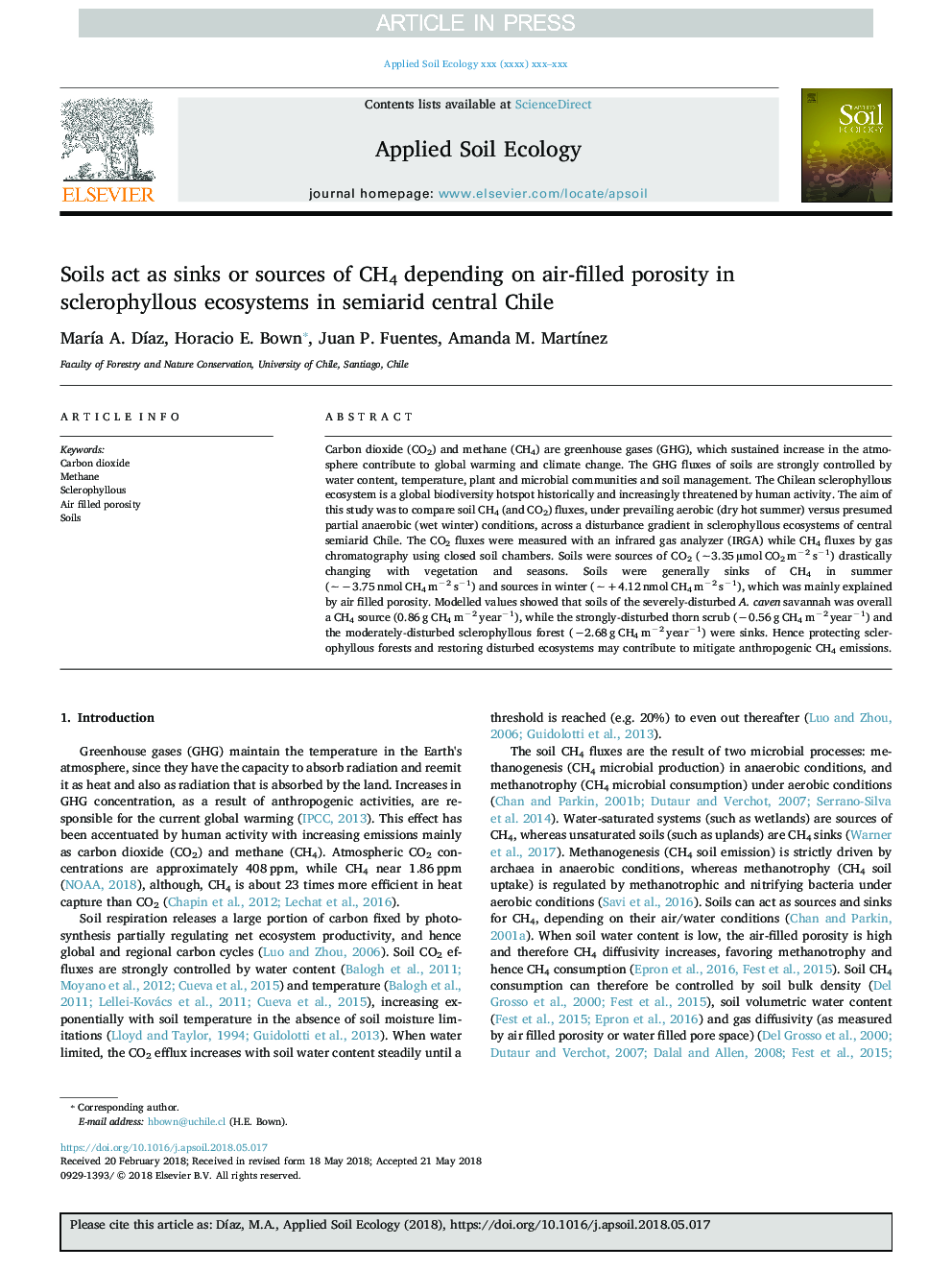| Article ID | Journal | Published Year | Pages | File Type |
|---|---|---|---|---|
| 8846565 | Applied Soil Ecology | 2018 | 8 Pages |
Abstract
Carbon dioxide (CO2) and methane (CH4) are greenhouse gases (GHG), which sustained increase in the atmosphere contribute to global warming and climate change. The GHG fluxes of soils are strongly controlled by water content, temperature, plant and microbial communities and soil management. The Chilean sclerophyllous ecosystem is a global biodiversity hotspot historically and increasingly threatened by human activity. The aim of this study was to compare soil CH4 (and CO2) fluxes, under prevailing aerobic (dry hot summer) versus presumed partial anaerobic (wet winter) conditions, across a disturbance gradient in sclerophyllous ecosystems of central semiarid Chile. The CO2 fluxes were measured with an infrared gas analyzer (IRGA) while CH4 fluxes by gas chromatography using closed soil chambers. Soils were sources of CO2 (â¼3.35â¯Âµmolâ¯CO2â¯mâ2â¯sâ1) drastically changing with vegetation and seasons. Soils were generally sinks of CH4 in summer (â¼â3.75â¯nmolâ¯CH4â¯mâ2â¯sâ1) and sources in winter (â¼+4.12â¯nmolâ¯CH4â¯mâ2â¯sâ1), which was mainly explained by air filled porosity. Modelled values showed that soils of the severely-disturbed A. caven savannah was overall a CH4 source (0.86â¯gâ¯CH4â¯mâ2â¯yearâ1), while the strongly-disturbed thorn scrub (â0.56â¯gâ¯CH4â¯mâ2â¯yearâ1) and the moderately-disturbed sclerophyllous forest (â2.68â¯gâ¯CH4â¯mâ2â¯yearâ1) were sinks. Hence protecting sclerophyllous forests and restoring disturbed ecosystems may contribute to mitigate anthropogenic CH4 emissions.
Related Topics
Life Sciences
Agricultural and Biological Sciences
Ecology, Evolution, Behavior and Systematics
Authors
MarÃa A. DÃaz, Horacio E. Bown, Juan P. Fuentes, Amanda M. MartÃnez,
